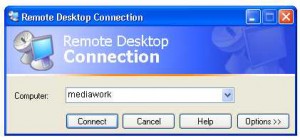by Gabe Goldberg
Anyone who uses email regularly, whether for business or personal communication, gets serious jitters when cut off from it. Fortunately, there are many ways to stay in touch away from home; the biggest problem can be explaining to people you’re visiting or traveling with why you want to.
One reason to stay caught up is that some ISPs impose limits on the amount of email they’ll store for you; if you exceed your quota, subsequent email will be rejected and bounced back to senders. That’s especially bad when it happens to mailing list traffic, since you may be unsubscribed. So, while it’s tedious, it’s sometimes worthwhile to suspend list mailings while you’ll be away.
If you routinely access email via the Web, you can stop reading here; your on-the-road access will be the same as it is at home, once you find Internet service. If you normally use software on your PC to download email, the simplest approach to traveling email is checking whether your ISP offers Web access. If so, research it before leaving home, register if necessary, and explore it enough so that’s not a burden later.
A free retrieval service is provided by Web sites such as mail2web which access your email account and present email via Web.
Though dial Internet is becoming less popular, it’s still widely available. If your ISP doesn’t provide Web access, query whether you can dial into its network. If so, again, get this working — you may never have used your laptop computer’s dial modem — before you depend on it to read email. If you use AOL, check whether your service plan includes dial access and look up local numbers where you’ll be.
If you’ll use dial access, consider suspending list mailings and telling people who send you huge files (video, graphics, whatever) to hold them until your return; they’re painful struggling down a dial connection.
If you’ll use a PC program such as Thunderbird, Outlook, Outlook Express, Eudora, etc., learn how to change email server settings since they’ll likely vary as you travel.
If your home Windows PC is always on, connected via broadband, you can — with technical setup beforehand and assuming no ISP-imposed blockage — use its built-in Remote Desktop feature to operate your home PC remotely as if you were sitting in front of it, accessing your email and other applications and files.
Sometimes simpler than Remote Desktop are Web-based services such as free LogMeIn and fee GoToMyPC which also connect you to your home computer. This is my preferred way to travel with email.
Gabe Goldberg (tiplet@gabegold.com), a lifelong computer pro and technology communicator, has written three books and hundreds of articles for audiences including techies, baby boomers and senior citizens. He enjoys sharing tips and pointers that help people use and have fun with technology.

